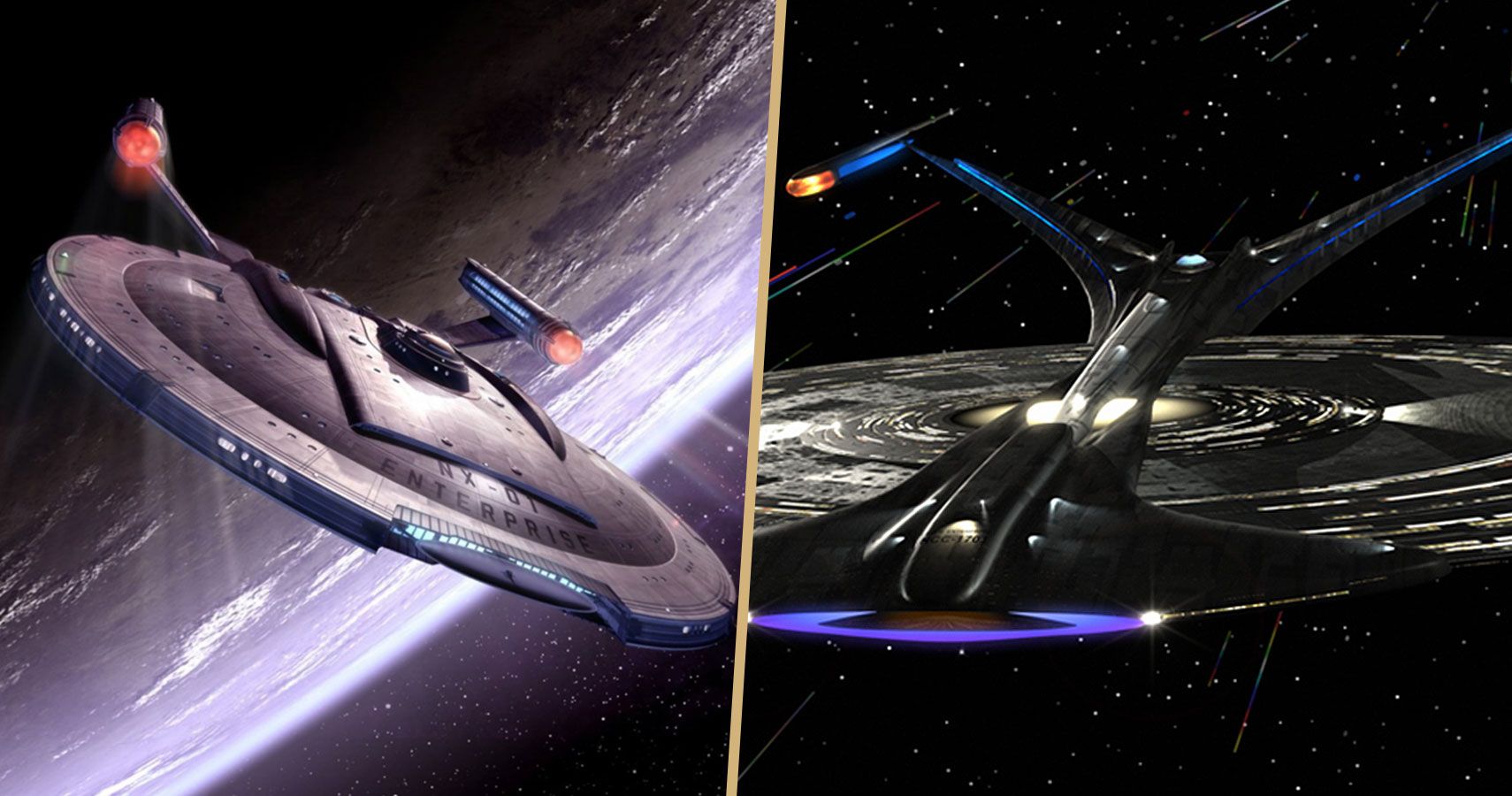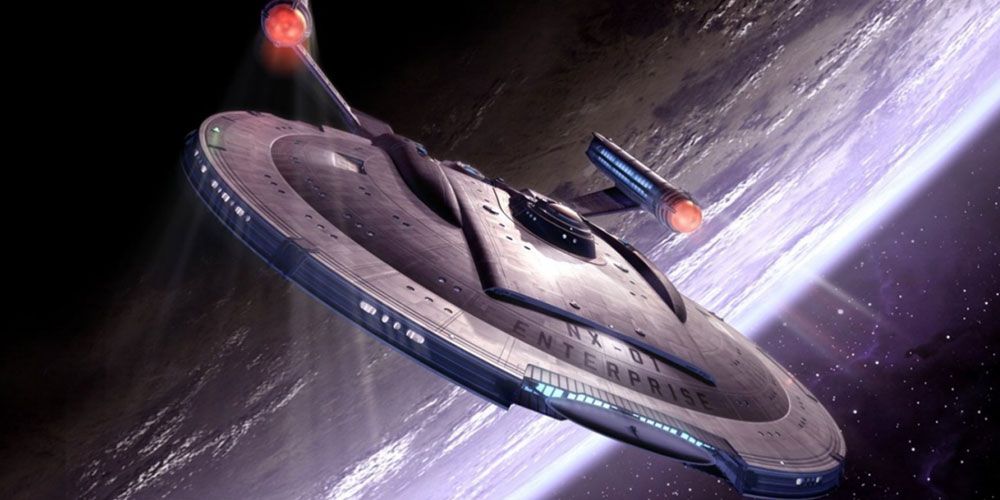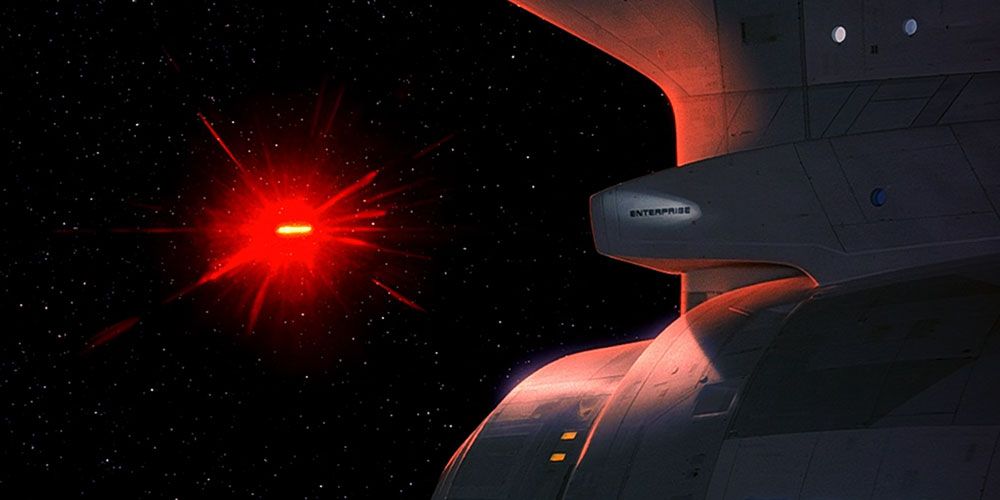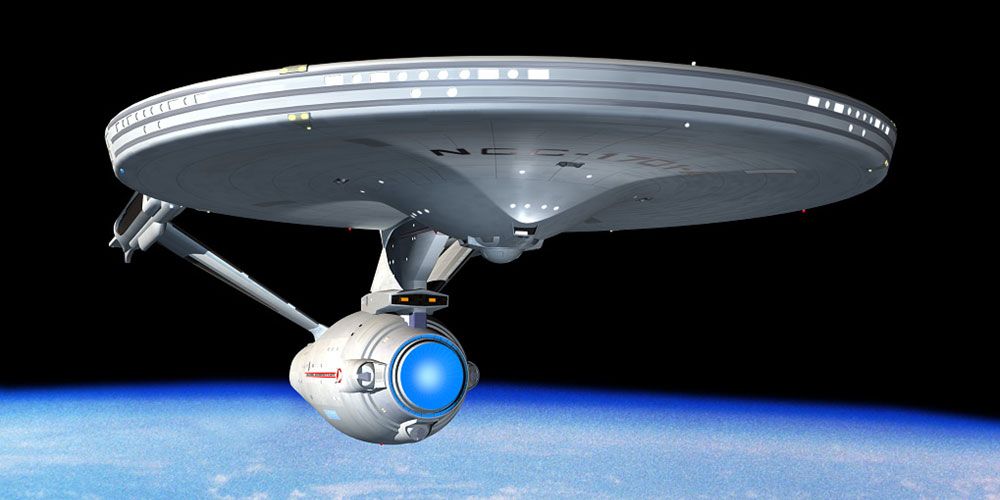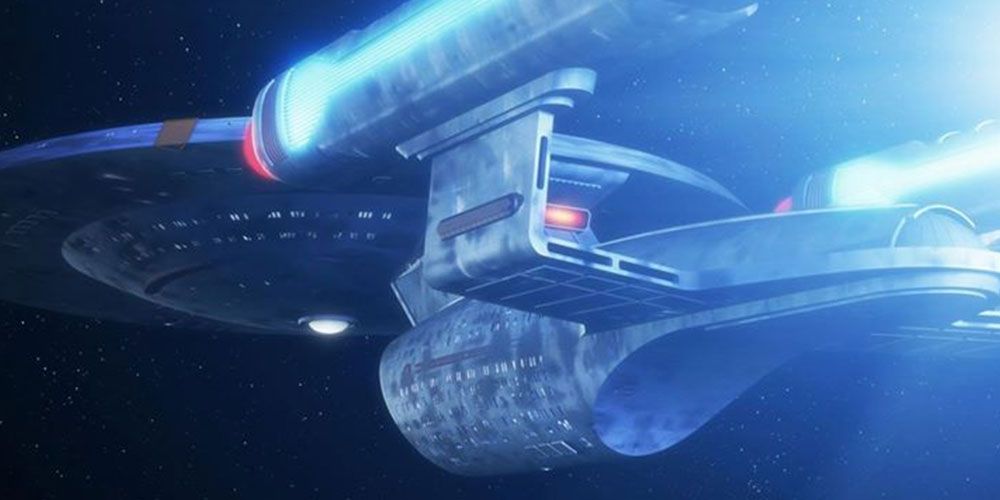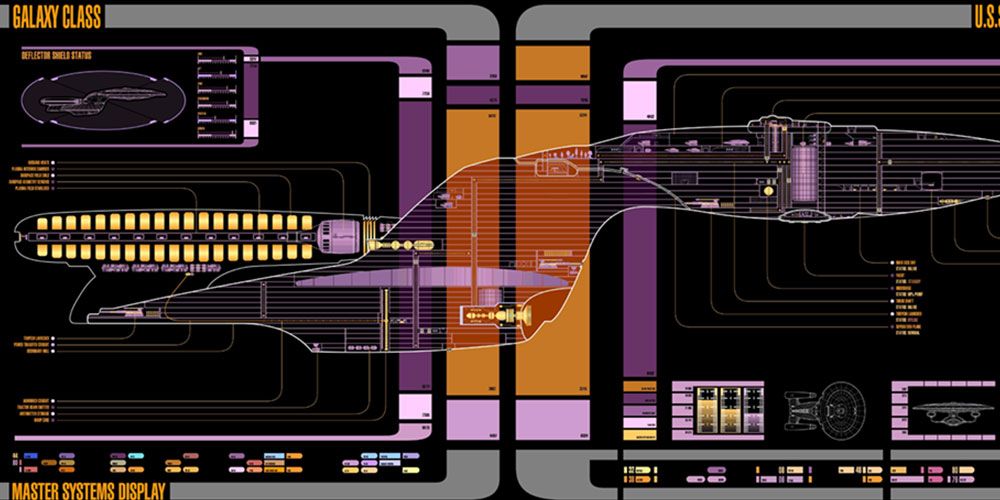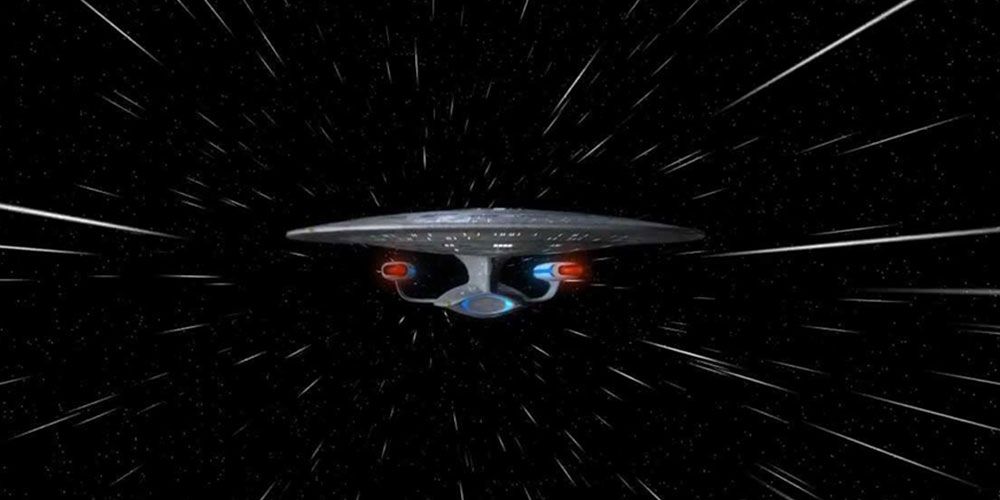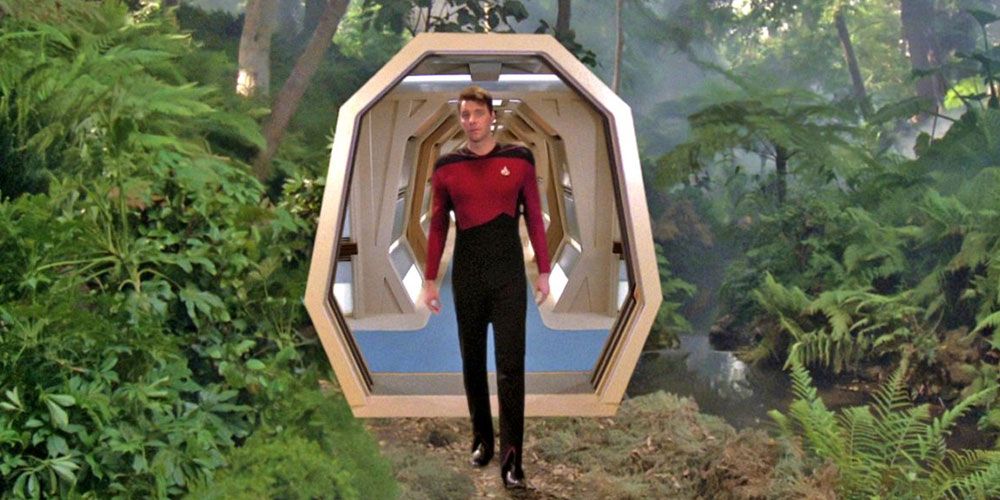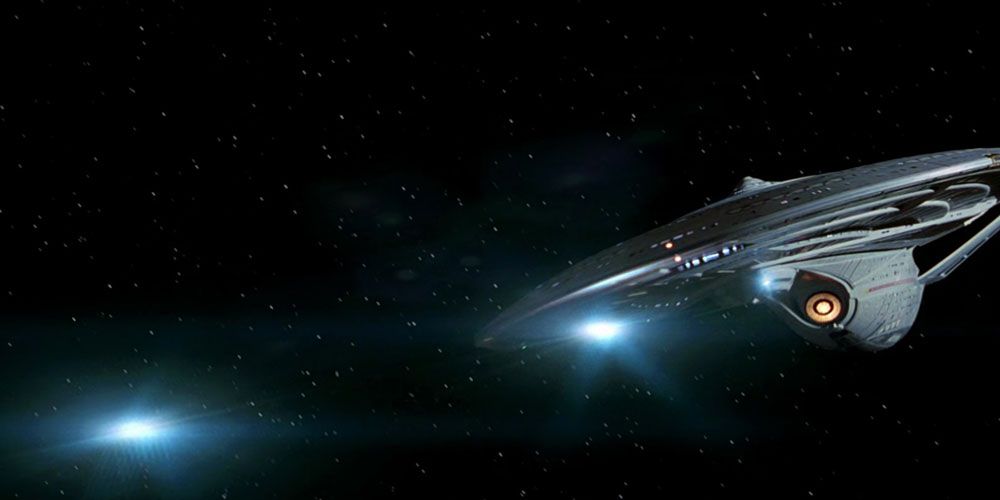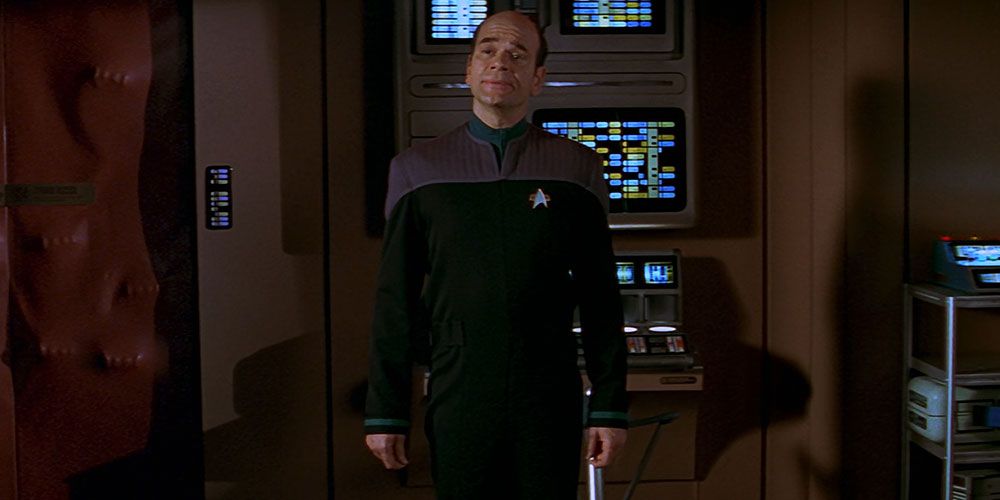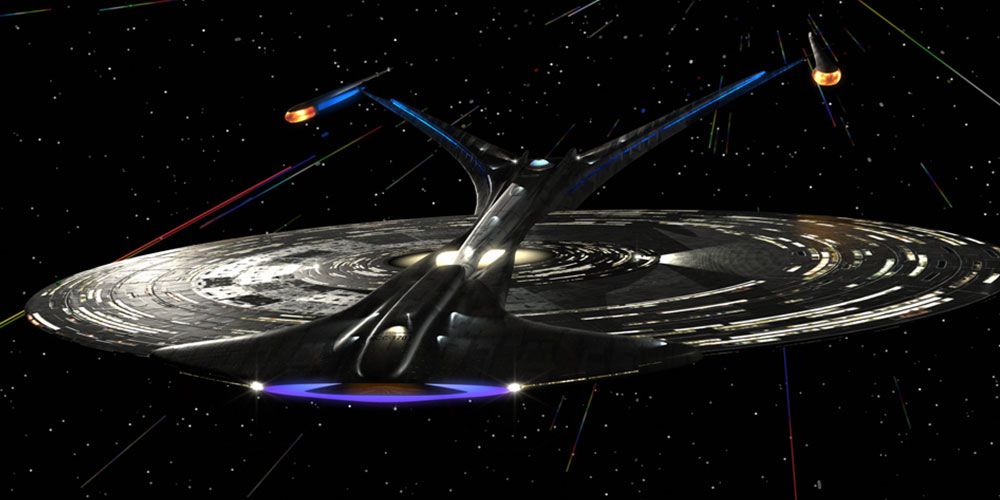An alternate-timeline Jean-Luc Picard once said that history should never forget the name Enterprise, and for good reason. It has become synonymous with everything that Star Trek and the United Federation of Planets stands for, and has served as the flagship of the Federation since its early days. Enterprise vessels are nothing new to Trekkers who have followed their journeys on TV, the silver screen, and other expanded material.
Throughout the centuries, Enterprise vessels have grown technologically by leaps and bounds, incorporating the latest designs from Starfleet's freshest and most enthusiastic minds. Here are some of the biggest tech leap-frogs in Enterprise starship history, and how they paved the way for a limitless future.
NX-01 Upgrade Package
The NX-01 Enterprise was significant in many ways, most notably because it was humanity's first ship capable of traveling beyond warp 2. This signaled a tremendous shift in the balance of power and politics within the known galaxy and laid the seeds of what would become the United Federation of Planets.
It also received multiple upgrade packages to compensate for its initially dismal defensive and offensive capabilities. NX-01 received photonic torpedoes and enhanced hull plating to better hang in a firefight against the Xindi (among others). In many ways, NX-01 was a work-in-progress research template for Starfleet to build on.
Automated Torpedo Launchers
After the destruction of the original NCC-1701 Enterprise, Starfleet produced a second version based roughly on the same design, but with a few new technological upgrades and interior cosmetic changes. NCC-1701-A boasted a much more refined weapons array, especially when it came to torpedoes.
It was the first Enterprise to employ a heavy degree of automation when it came to firing torpedoes in battle. This would prove beneficial in battles with foes who were beginning to ramp up their own offensive tech, not to mention new alien species with highly advanced weaponry.
Excelsior-Class Tech
When the Enterprise-A was finally decommissioned, work began on an entirely new Enterprise model designed for a brand new crew. NCC-1701-B was different in many ways from the preceding two Enterprise vessels in that it was based on Excelsior-class technology. That starship class saw Starfleet flirting with transwarp drive technology which unfortunately didn't pan out.
However, Excelsior tech was all over the Enterprise-B and included Type 8 phaser technology, a more powerful deflector dish and a second pair of impulse engines for sub-warp maneuverability. The Excelsior class was heavily supported by Starfleet well into the 24th century with periodic and consistent upgrades.
Enhanced Battle Tech
The NCC-1701-C Enterprise was the first of its name to prioritize weapons and defensive technologies in its design. This was due largely to the threats posed by the Klingon Empire during an especially testy period of Starfleet's history, especially in the wake of the Khitomer plot involving Captain Kirk.
As such, the Enterprise-C went full out with powerful phaser and photon torpedo tech across fore and aft firing arcs, not to mention a level of maneuverability that gave it a huge advantage not just against potential Klingon threats, but Romulan vessels as well.
The LCARS Interface
Next Generation fans know the LCARS (Library Computer Access & Retrieval System) interface quite well, and it was standardized across all Starfleet vessels of the time period. This interface popped up in the 23rd century and featured highly sophisticated voice command subroutines and a streamlined approach to manual operations, storage and retrieval.
The Enterprise-C was the first of its name to incorporate the LCARS interface in its first form. Later, all Ambassador class ships would receive an upgrade to the standardized LCARS version used predominantly throughout the 24th century.
Enhanced Warp Drive
Compared to the Galaxy class tech seen in the NCC-1701-D Enterprise, all previous vessels paled in comparison. This was especially true of its warp drive capabilities which far exceeded anything that had come before, and allowed the Enterprise to explore vast swathes of foreign space at a much faster rate.
The Enterprise-D was capable of sustaining a maximum warp speed of 9.6 for an astonishing 12 hours. Its warp core was also powerful enough to channel a buildup of energy through the ship's main deflector dish, making it a tour de force among warp drive systems.
Holodeck Technology
The Enterprise-D was also the first vessel of its name to incorporate Holodeck technology as a means of leisure and entertainment, as well as for training and research purposes. This amazing technology was capable of accurately simulating any real-life scenario along with interactive characters who responded intelligently to questions and behavior.
A primary reason for the Holodeck's presence on the Enterprise was due to Starfleet's decree that families should be allowed on board, including children. It would serve as a good way to alleviate the stress of deep-space exploration, while also providing a clean slate for research purposes within a fully defined 3-dimensional space.
Quantum Torpedoes
Following the destruction of the Enterprise-D at Veridian III, Starfleet immediately went ahead and commissioned the production of NCC-1701-E which was based on Sovereign-class starship technology, rather than Galaxy-class. One of its main technological enhancements were quantum torpedoes which replaced the long-standing photon torpedo used throughout much of Starfleet's history.
This plasma-based warhead was capable of disrupting matter at the quantum level, making it a far greater threat even against advanced threats like the Borg. Star Trek scientific consultant André Bormanis likened the difference between photon and quantum torpedoes to an atom bomb versus a hydrogen bomb.
The EMH
Emergency Medical Holograms were becoming standard on many other classes of Starfleet vessels, but the Enterprise-E was the first one to incorporate the technology. They were originally meant to serve as a rudimentary replacement for a human Doctor in the event that none were available or otherwise incapacitated.
The most famous EMH in Starfleet was undoubtedly the Doctor onboard the USS Voyager who had expanded beyond his original programming to become a character unto himself. A more "primitive" version of the Doctor helped distract a group of Borg trying to bust into the Enterprise E's medical bay during the second Borg invasion of Earth.
Far-Future Tech
Enterprise audiences caught a glimpse of the most advanced Enterprise vessel yet seen in the entire franchise - NCC-1701-J. This highly advanced starship operated in the 26th century and participated in the Federation's battle against the Sphere Builders within the Delphic Expanse.
Little is known of what the Enterprise-J was capable of, since its design was rushed to completion with no background info to go on. However, judging by the ship's ultra-sleek appearance, it has been theorized that the Enterprise-J may have relied on interior site-to-site transporters as opposed to traditional turbolifts. This seems plausible given the use of site-to-site transporters at Starfleet headquarters as seen in Star Trek: Picard.

